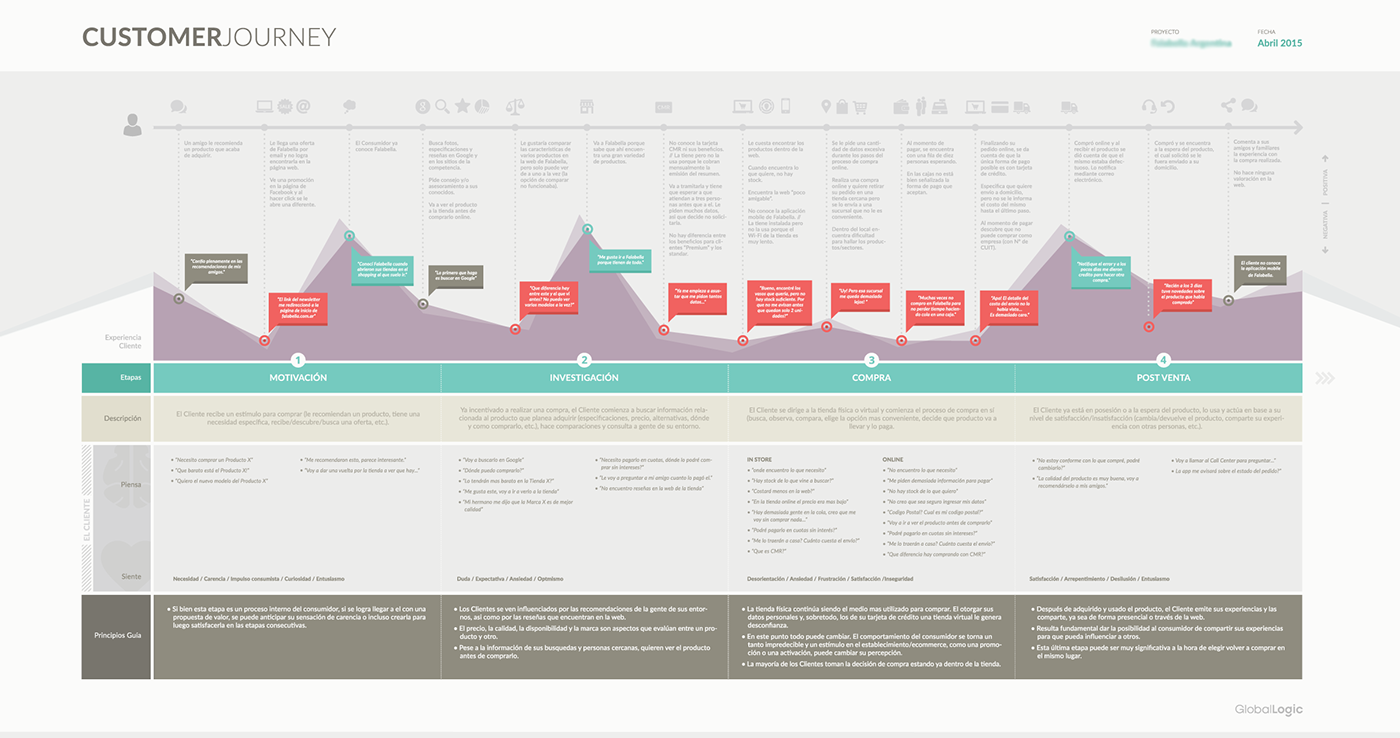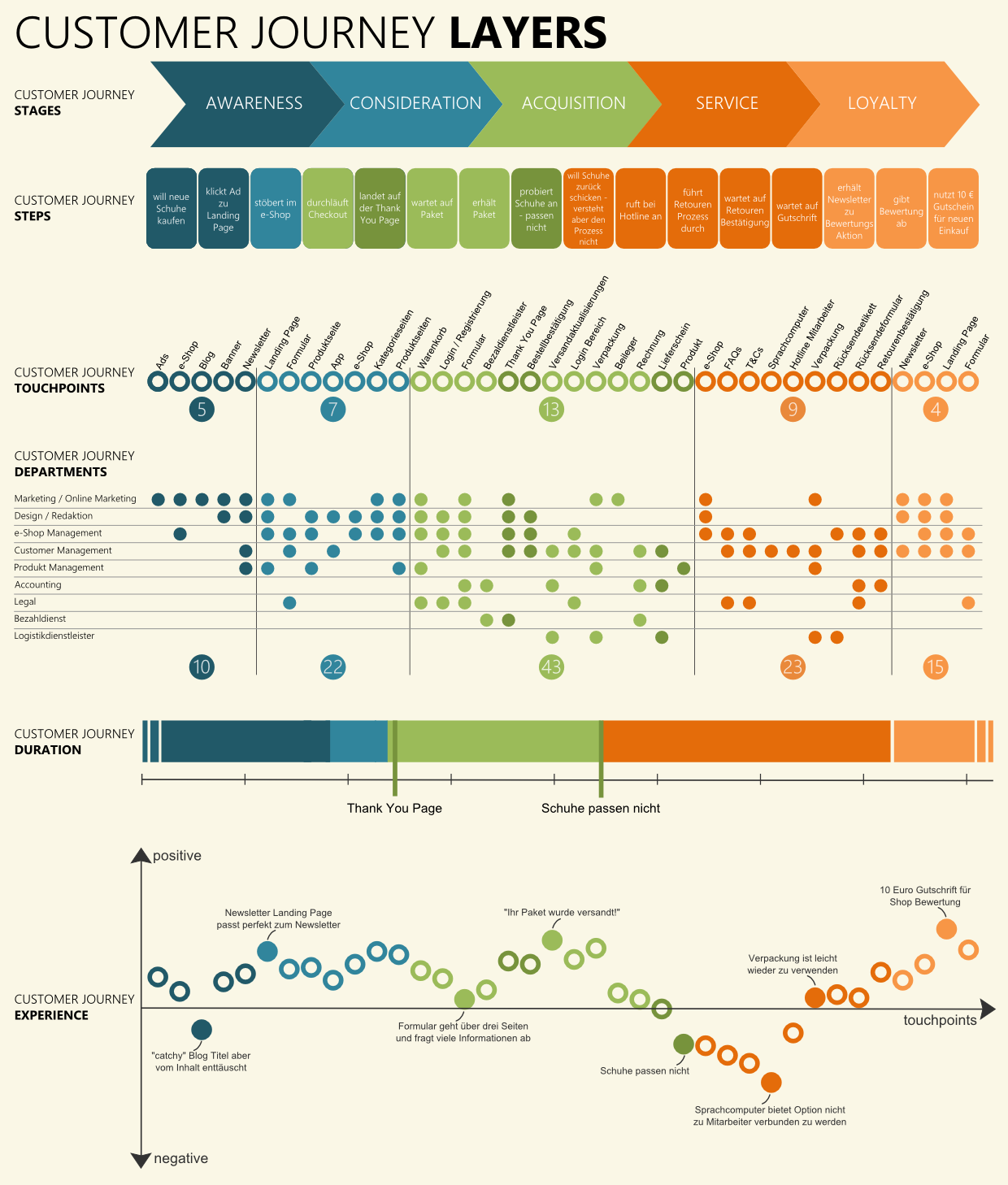Journey mapping is the incredibly valuable step of the design process which allows you to observe your customers in their natural habitat so you can interact with them more effectively.
Observation from this perspective offers insights and opportunities that help product and user experience designers understand the steps that users take. With that information, those experiences can now be enhanced by producing new elements that are more suited toward addressing the goals, needs, and expectations of the customer as they truly are.
This article will help you get the most out of creating journey maps by going beyond a checklist of what should be covered and instead focusing on discovering why this data is so important and how we can use the information to design incredible customer experiences.
Why the Customer Journey is So Important
According to Forbes, the ROI of a customer journey map is only truly realized when all stakeholders and participants fully understand how to incorporate the findings and analytics into their own individual areas and efforts.
This is because, essentially, journey maps put teams in the shoes of the user so they have an opportunity to understand the thoughts and emotions that they encounter during a process or interaction. Having this deeply personal and real-time information can help us make more streamlined and efficient processes and be much more effective with our outreach efforts.
Click the image below for brilliant infographic from Tandem Seven which provides a brief overview of the basics of journey mapping.
Five Key Insights Gained from Mapping
Journey mapping is all about asking the right questions. It is the very beginning of a truly comprehensive design process and a strict requirement when trying to make any project successful.
Being able to empathize with consumers and diverge from typical hard-sell marketing techniques will soon become a permanent staple in design thinking.
It is a methodology which naturally lends to the authentic, transparent communications that today’s audiences require.
This critical look inside the user’s mind can also deliver five priceless insights previously unattainable by traditional research methodologies:
1. A ‘no stone uncovered’ look at the steps a customer takes in order to find your product and a guide for how to make each of those complex moments a positive interaction so you meet their expectation every step of the way and ensure your current position is the most productive.
2. The ability to bring the customer journey to life to with instantly actionable findings that can be shared with internal teams to provide an in-depth understanding of target consumers in clear, unambiguous terms.
3. Data that allows you to present streamlined budgeting plans by discovering which marketing tactics (strategy-based touchpoints) are most effective and visible to your target audiences from their point of view.
4. An honest portrayal of how customers perceive their interactions with your product, staff, and media.
5. And, potentially, a look behind the veil at the source of those feelings so you can rewrite the experience and map an entirely new journey that leads the customer down the desired path and walks them right into your appointed destination.
The list of benefits associated with getting to know your customers in a more intimate fashion goes on and on. Get started by calling a brainstorming session with key players and design contributors to clearly define the current goals of your organization and determine the metrics you will use to identify a successful customer experience.
Using Journey Mapping to Enhance Product Design
Journey maps really work to identify and strategize for all of the internal and external aspects that could potentially have some form of influence on a customer’s purchase decision as well as their long-term relationship with your brand.
After establishing standard pillars such as target audience, personas, a clear vision of the outcome we want to achieve, and identifying the tools we will use to both support and measure results, it is time to go beyond the outer shell and dig deeper into the alchemy of our customer interaction.
This means brainstorming every potential encounter our audiences will have with our brand, marketing, and offerings, and addressing the needs of the customer at each of those touchpoints by anticipating challenges they might experience and making it as easy as possible for them to run the full lifecycle of interaction from exploration and interest to the decision to buy and providing feedback.
When approached in this manner, businesses have the benefit of growing a deeper, more loyal relationship with target audiences and they also have the ability to produce stronger influencers and brand role models which supports staying power in their market.
Six Great Ways to Turn Insight into Improvement
Journey mapping makes product design a user-centered process which also makes them an excellent support tool for building customer loyalty. A well-thought-out journey map can pave the road to success from touchpoint to lifetime customer.
The process is simple, collaborative, and has the potential to boost corporate morale as well as individual team member success.
The goal is to map the journey a person will take to your product, analyzing the curves, dips, and even the foundation underneath. Then you gather these instances into a clearly communicable format and present the findings to stakeholders, sales partners, and strategic planning teams.
After investigating the thinking strategies of buyers you can more accurately produce great ideas, create a prototype variance that incorporates the new, psychology-based solutions, evaluate the response to the new design/structure, and make improvements that will lead to an amazingly well-crafted final output.
New insights could uncover things in your current strategy that you never even considered. Here are some examples of how this data can be used to your benefit:
1. Make deliberate changes to problematic interaction patterns so they are more consistent and substantial across the board.
2. Be more aware of what’s “working” in your strategy so you can do more of that more confidently.
3. Remove any impediments that were previously serving as barriers to purchase.
4. Employ technological solutions that make your products more share and newsworthy.
5. Improve key online metrics that may be having an impact on sales such as accessibility, functionality, and interface design.
6. Identify teams where cross-functional performance might produce an enhanced customer experience which was previously not visible.
With the right amount of focus, we can use journey mapping to unveil information that leads to groundbreaking improvements.
Get inspired with some ideas for mapping your customer experience by taking a look at the following journey map designs from all over the web, followed by one of my own creations. Share a link to your own gorgeous creation in the comments below.

Customer Journey Map
by Florencia Pagano

Exploratory Visitor Map
by Oliver Buchberger